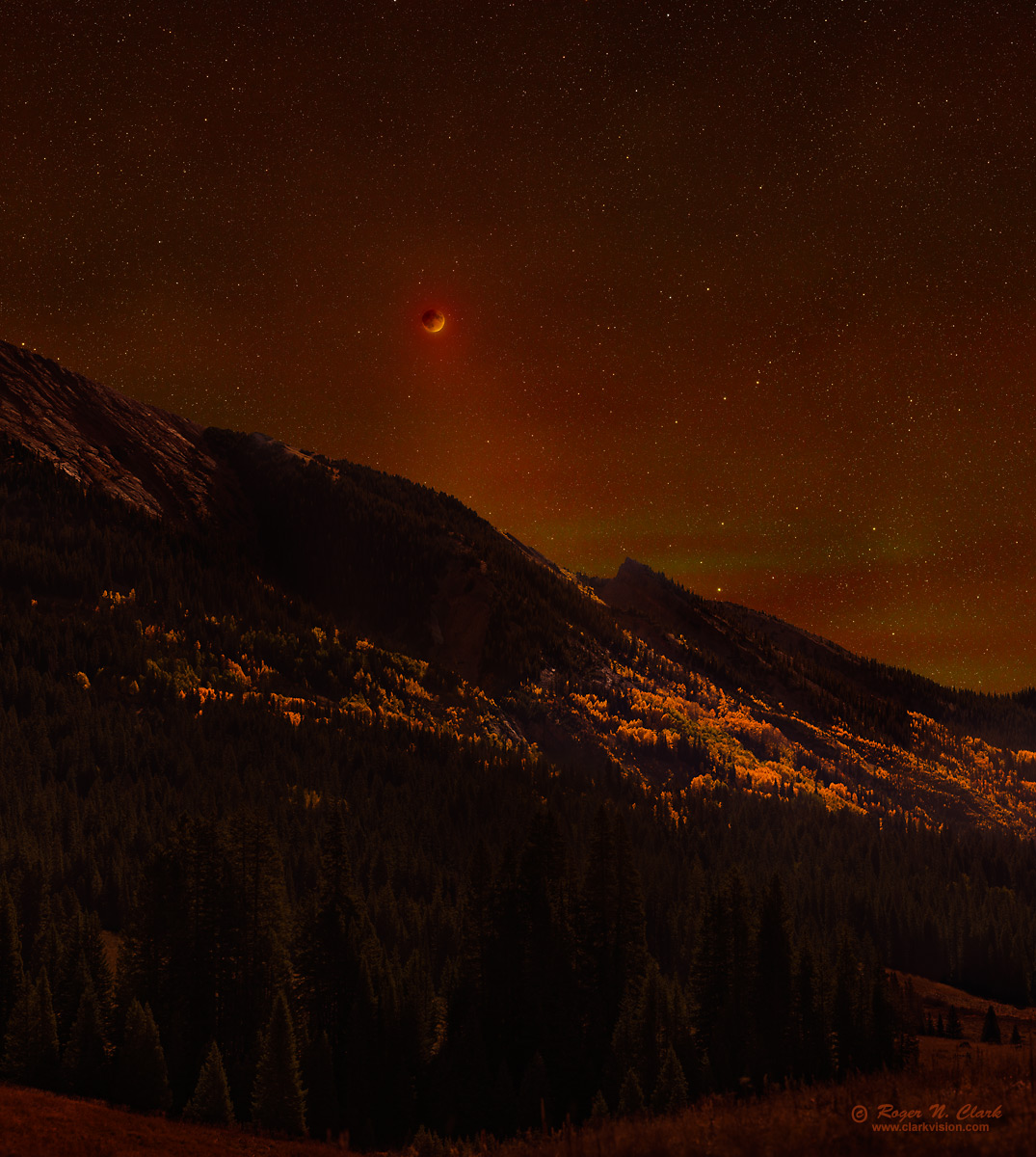| Home | Galleries | Articles | Reviews | Best Gear | New | About | Contact | Gallery Index | Previous |
Next |

| Home | Galleries | Articles | Reviews | Best Gear | New | About | Contact | Gallery Index | Previous |
Next |

The lunar eclipse of September 27, 2015 occurred near lunar perigee: when the Moon is closest to the Earth. The eclipse was particularly dark allowing for longer exposures to pick up stars. The light illuminating the Moon in eclipse is light scattered through the Earth's atmosphere, making it very red, like a red sunset. But when we view a sunset from the Earth, we see light that is transmitted from space through the atmosphere to the Earth's surface. But light in a lunar eclipse has light going both in and out of the atmosphere, so double the reddening effect. The September 2015 eclipse was particularly red.
This scene is from the central Colorado Rocky Mountains, USA. I chose the location from my knowledge of the area, and computed positions of where the Moon would appear during the total eclipse phase, combined with tall mountains so an image of mountains and Moon could be made. That, combined with peak fall colors with yellow aspens make the scene.
The light in this image is all natural. The red Moon colored the sky red. The red and green banded airglow is light from molecules in Earth's upper atmosphere excited by solar ultraviolet light during the day and from cosmic rays. The molecules emit light throughout the night. The red is typically from hydroxyl (OH) 80 to 90 km high, and the green is from oxygen around 95 km high. For more on natural color in the night sky see Parts 2a, 2b, 2c and 2d on Color of the Night Sky and proper post processing to show those colors.
Technical. This image is a 57-image HDR mosaic. The image was made with a Canon 6D 20-megapixel digital camera and a Canon EF 200mm f/2.8L II USM Lens at f/2.8. The sky is made up of 32 exposures at ISO 1600, each 30 seconds, with 2 frames per position and each pair averaged together (stacked). The eclipsed Moon was a 1/3 second exposure at ISO 200, f/2.8 Exposure of the stars and Moon were tracked using an Astrotrac. Exposures on the land (25 images) were made with the same camera and lens but with 60 second exposures, ISO 1600, f/2.8, and no tracking.
The full resolution image is 14,774 pixels high and 13,230 pixels wide (195 megapixels) allowing for stunning large prints. An enlargement of a sky portion is shown here: Super Blood Moon Lunar Eclipse Nightscape 2015 #2
No dark frame subtraction, and no flat fields were used. The Canon 6D has the very low pattern noise at ISO 1600, and on-sensor dark current suppression, so there is no need to do dark frames. Modern raw converters correct for hot pixels and, with lens profiles, correct for light fall-off, so there is no need for flat field corrections. Processing was done with 16-bits/channel.
To learn how to obtain stunning images like this, please visit my Extensive Articles on Photography .
Keywords to this image = nightscapes landscape-1 astrophoto-1 moon eclipse mosaic night low-light digital_astro large_format colorado canon_6d
Image ID: eclipse-nightscape-rnclark.09.27.2015.IMG_7167-7234.f-1200vs.jpg
| Home | Galleries | Articles | Reviews | Best Gear | Science | New | About | Contact |
Last updated November 03, 2025